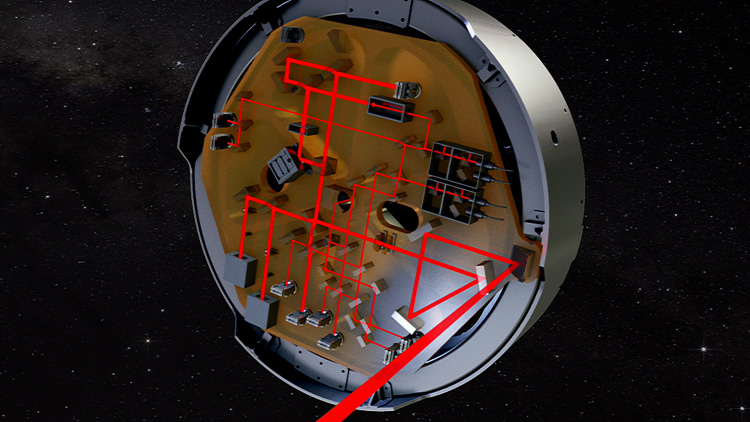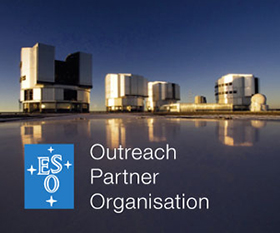An international consortium, of which the Instituto de Astrofísica e Ciências do Espaço (IA) is a member, is defining and producing the prototype of the high power laser heads that will be incorporated into each of the three spaceships of the mission LISA, of ESA.
The stabilisation level of the laser beams is critical to the LISA1 mission due to the fact that the spaceships are separated by two million kilometres and due to the high accuracy required for the measurement of this distance. The laser beam emitted by one of the spaceships reaches the other so weakened that it is impossible to reflect it back. The solution is to send a replica of the received beam by means of a second laser and in tune with the first, which demands a very high stabilisation level.
Notes:
- LISA will be a space observatory with the purpose of detecting gravitational waves, periodical contractions and expansions in the curvature of space-time generated by the movement of massive bodies. These waves produce changes in the distance between two objects, for instance, two spaceships. The measurement of gravitational waves provides direct information about the movements of the massive bodies that started them, such as black holes. The LISA concept is based on the measurement of phase differences between two laser beams emitted and received by three spaceships forming an equilateral triangle which sides measure two million kilometres.


